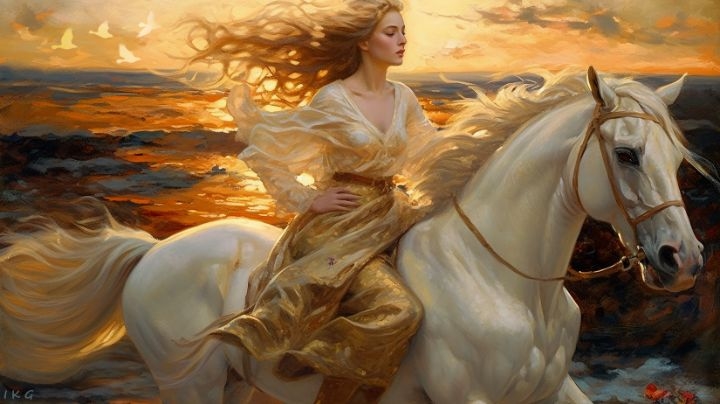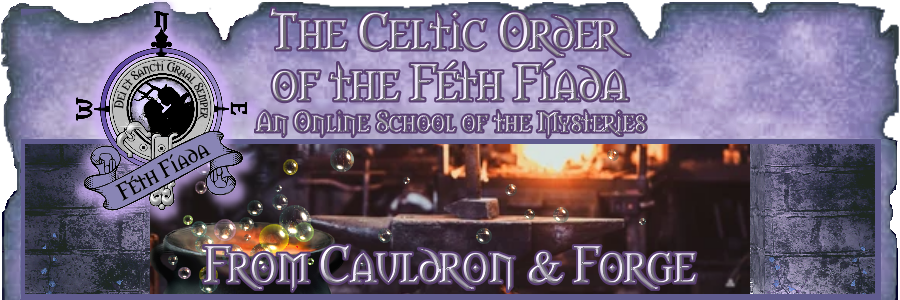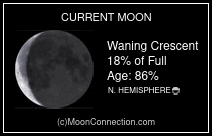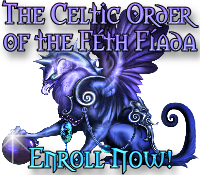
Lately, I’ve been doing a great deal of research and study on the Welsh Goddesses. Like so much of what I do, this is largely personal work for me, for my own personal spiritual practice. I want to learn as much about Rhiannon, especially, as I possibly can for my work with her at this time, because even though I’ve always felt I shared a special bond with her, simply because my birthday falls on her usually given Feast Day (March 4), it’s still been quite a while now since I’ve been in touch with her.
But these past few weeks, I’ve been digging deep into Rhiannon’s history and myth, re-familiarizing myself with it and actually uncovering new elements to it, of which I was never before aware.
The first thing I discovered, of course, is that like so much of what is on Internet, there is an inordinate amount of pure bunk out there about Rhiannon. New Pagans, particularly, often do a limited bit of cursory reading, usually in badly researched, documented, and written Wicca 101 books, then post all the erroneous information they’ve read to their blogs, groups, Mystery Schools, the Internet, and elsewhere — thus perpetuating the same mistaken beliefs and conclusions over and over again.
Here’s one such piece of information about Rhiannon:
“The Celtic Moon Goddess Rhiannon was born at the first Moon Rise and is known as the Divine Queen of Faeries. She is the Goddess of fertility, rebirth, wisdom, magick, transformation, beauty, artistic inspiration and poetry.”
This quote appears, unattributed, on numerous websites all over the Internet. As nearly as I can determine through attempting to track it back to its actual origin, it may come from a website and/or a 70-page, self-published Kindle book, The Celtic Moon Goddess, both the website and the book by Eliseo Mauas Pinto, who is an Argentinian musician and poet — not a Celtic scholar. Further, despite diligent searching, I have been unable to find his own source and/or inspiration for this information.
Because I happen to belong to a seriously scholarly and erudite Celtic group on Facebook, I also asked there. None of my fellows equally dedicated to the ancient Celts and their historical texts had a clue, either. To the contrary, like me, all who responded (and there were more than seventy likes and comments; my question actually sparked quite a lively discussion!) were in agreement that nothing like this quote is to be found in any of the ancient Welsh or other Brythonic tales, and that this is decidedly not, in fact, how Rhiannon is portrayed in The Mabinogi, which is the primary source for her.
Indeed, Stevie Nicks notwithstanding, virtually everything we know about Rhiannon points to her being a Sun Goddess, not a Moon, Night, and/or Wind Goddess at all, and although she may have been a Faery Queen, she is for several reasons equally as likely to have been a Giantess.
So, the first thing we need to do when digging deep is to let the sun shine in to illuminate our sources. Are they primary, secondary, or tertiary? If you don’t know what any of that means, a good explanation can be found here: Primary, Secondary, and Tertiary Sources: A Guide from University Libraries.
Next, we need to ask ourselves just exactly how accurate and trustworthy our sources really are. Any field of study can have bad works in it, and Wicca, for example, is absolutely rife with poorly researched, documented, and written books. Some popular Wiccan authors, for example, are well known to have made numerous egregious errors about the Celts in their work, and also appear on Ár nDraíocht Féin’s (“Our Own Druidry”) “Not Recommended” list. Yet they are routinely cited and recommended by countless Wiccans who apparently don’t know any better.
So we need to learn how to read critically, analytically, and with intelligence, thought, and discernment.
One of the things to look for, for instance, are full quotes in context. That means the author didn’t just give you the only snippet of a quote that supported his/her position, and that, further, s/he presented the quote in its proper original context, complete with attribution. Thus, if the subject is Rhiannon’s horse, then the author has provided you with a quote that originally actually appeared in regard to Rhiannon’s horse and not Maeve’s bull (unless, of course, some legitimate comparison is being drawn between the two, and that is made clear to you). In addition, the author has told you the source of the quote, down to the page number, if available. So it’s generally wise to double check quotes in a new-to-you author’s work until you are certain s/he can be trusted.
Etymology (the study of word origins and the way in which their meanings have changed through history) is another good clue to the accuracy of your sources. If a book or a website tells you that Rhiannon’s name, for instance, means “Moon Maiden” or “Night Queen” or “White Witch,” etc. (all of which I have seen, by the way), that’s a huge red flag waving a warning to you about the text’s incorrectness. In reality, most Celtic scholars are agreed that Rhiannon’s name is most likely to derive from the reconstructed Brittonic form *Rīgantonā (“Divine or Great Queen”). So if an author routinely mistranslates names and other words, pay heed, and look for another source that actually understands the language(s) they’re working with.
Some of the Celtic languages, for example, had a tendency to become increasingly difficult with time. If you’ve ever paid any attention to how I write Samain instead of Samhain, Lugnasad instead of Lughnasadh, etc., then you’ll know that, these days, I routinely leave the h’s out of such words. That’s because Old Irish, which I much prefer, was simpler and didn’t have them, and Samain and Lugnasad are the Old Irish forms. Samhain and Lughnasadh are the Middle Irish forms (Samain and Lúnasa are the Modern Irish forms). In addition, you’ll often see references to Samhuinn, which is the Scottish Gaelic form, while Sauin is Manx, and Samonios is Gaulish.
Authors who are writing about such things should know and understand them. If your sources don’t, then it’s time to find new ones. Other signs of good sources are extremely detailed footnotes, as well as bibliographies that reference many other respected works, rather than just the Internet and/or sources you already know to be suspect.
How else can you learn to tell good sources from bad ones? One of the best ways is simply to shift out of the Wicca 101 mode. When I first began to seek training at various places, I already possessed a great deal of knowledge about Celtic spirituality. But believe it or not, I didn’t get it from popular books about Wicca. Rather, I got it from scholarly books about the ancient Celts. My personal bookshelves are filled with hundreds of such books, by authors like Rachel Bromwich, Barry Cunliffe, Miranda Green, and John Koch, just to mention a few highly respected Celtic scholars.
I first learned about Rhiannon, for example, not from current Llewellyn books about Celtic Goddesses, but from the Four Branches of the Mabinogi, which are the earliest prose stories of the literature of Britain, compiled in Middle Welsh during the 12th–13th centuries from earlier oral traditions. There are wonderful translations of these and many other such texts, if only you search for them. You can read Lady Charlotte Guest’s nineteenth-century translation (to be taken with a grain of salt) The Mabinogion for free online at places like Sacred Texts, order a copy of Patrick K. Ford’s The Mabinogi and Other Welsh Tales and/or Sioned Davies’ The Mabinogion — both excellent translations, or if you’re really serious about the Welsh texts, spring for Will Parker’s invaluable translation and analysis, The Four Branches of the Mabinogi: Celtic Myth and Medieval Reality.
Reading texts like these is how I know, for instance, that Rhiannon’s birth is nowhere described in the ancient Welsh tales — least of all that she was “born at the first Moon Rise…” To the contrary, in fact, when we are first ever introduced to Rhiannon, she is a fully grown adult woman mounted upon a powerful white horse and “dressed in gold silk brocade” or “with a garment of shining gold around her,” depending upon which translation you read. Regardless, in reality, she could legitimately be said to be “a woman clothed in sun,” and this is but the first of the many indications that she is indeed a Sun Goddess and has little or nothing whatsoever to do with the Moon.
What are your own thoughts about the Welsh Goddesses…especially Rhiannon? Do you, too, see her as “a woman clothed in sun”?
Blessings!
APs Rhianwen Bendigaid










